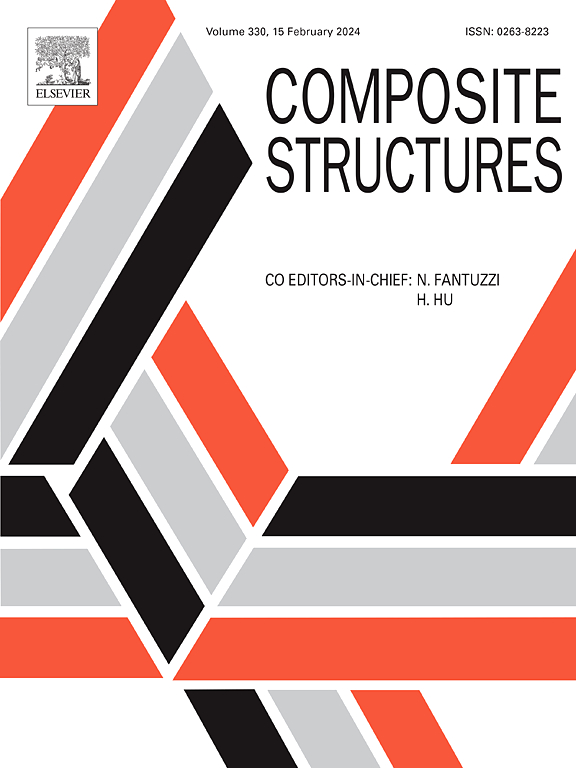Physically informed neural networks for homogenization and localization of composites with periodic microstructures
IF 6.3
2区 材料科学
Q1 MATERIALS SCIENCE, COMPOSITES
引用次数: 0
Abstract
We propose a physics-informed multiscale deep homogenization network (MulDHN) for the homogenization and localization of composites with periodic microstructures. This framework employs the zeroth-order homogenization method, which decomposes the displacement field into macroscopic and fluctuating components, depending on the global and local coordinates, respectively. The fluctuating component is determined using neural networks that minimize the residuals of Navier’s displacement equations, trained on the local coordinates of randomly sampled material points. Periodic boundary conditions are inherently satisfied through the integration of a periodic layer, which incorporates trainable harmonic functions. The key innovation of this work lies in scaling the coordinates of collocation points by different factors before feeding them into separate sub-networks. These scale factors transform the hard-to-train high-frequency characteristics in the unit cell solution into easy-to-learn low-frequency counterparts, significantly improving the training process. To validate the proposed model, extensive numerical experiments are conducted to verify the effects of neural network hyperparameters and dataset size on the performance of MulDHN, the homogenization properties of unit cells, and local field variables. The performance of the MulDHN is demonstrated to be superior to the conventional neural networks upon comparison with the classical finite-element predictions of unit cells when the fiber–fiber interaction is significant.
具有周期性微观结构的复合材料均匀化和局部化的物理信息神经网络
我们提出了一种基于物理信息的多尺度深度均匀化网络(MulDHN),用于具有周期性微观结构的复合材料的均匀化和局部化。该框架采用零阶均匀化方法,根据全局坐标和局部坐标分别将位移场分解为宏观分量和波动分量。波动分量是通过神经网络确定的,该神经网络利用随机采样的材料点的局部坐标进行训练,使纳维尔位移方程的残差最小化。周期边界条件通过包含可训练调和函数的周期层积分固有地得到满足。这项工作的关键创新在于将并置点的坐标按不同的因子进行缩放,然后将它们馈送到单独的子网络中。这些比例因子将单元胞溶液中难以训练的高频特征转化为易于学习的低频特征,显著改善了训练过程。为了验证所提出的模型,进行了大量的数值实验,以验证神经网络超参数和数据集大小对MulDHN性能、单位细胞的均匀化特性和局部场变量的影响。当光纤-光纤相互作用显著时,与经典的单元格有限元预测结果相比,MulDHN的性能优于传统的神经网络。
本文章由计算机程序翻译,如有差异,请以英文原文为准。
求助全文
约1分钟内获得全文
求助全文
来源期刊

Composite Structures
工程技术-材料科学:复合
CiteScore
12.00
自引率
12.70%
发文量
1246
审稿时长
78 days
期刊介绍:
The past few decades have seen outstanding advances in the use of composite materials in structural applications. There can be little doubt that, within engineering circles, composites have revolutionised traditional design concepts and made possible an unparalleled range of new and exciting possibilities as viable materials for construction. Composite Structures, an International Journal, disseminates knowledge between users, manufacturers, designers and researchers involved in structures or structural components manufactured using composite materials.
The journal publishes papers which contribute to knowledge in the use of composite materials in engineering structures. Papers deal with design, research and development studies, experimental investigations, theoretical analysis and fabrication techniques relevant to the application of composites in load-bearing components for assemblies, ranging from individual components such as plates and shells to complete composite structures.
 求助内容:
求助内容: 应助结果提醒方式:
应助结果提醒方式:


